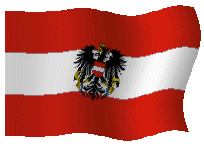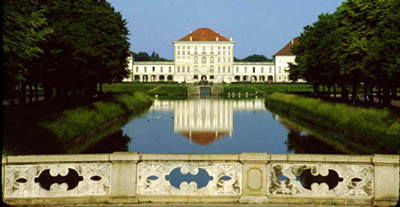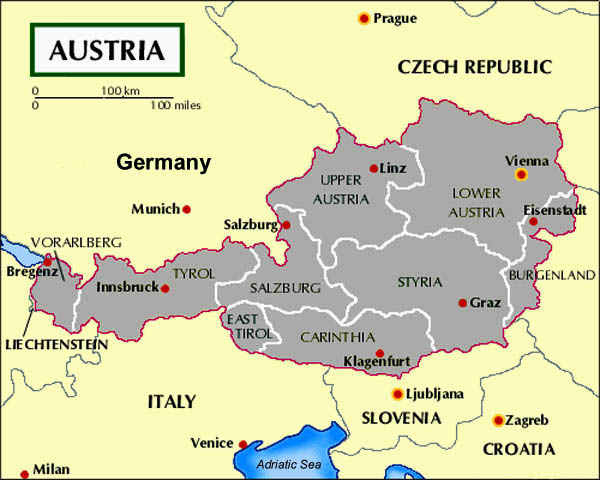|
Introduction
Austria, a small country in central Europe, is a scenic wonderland
characterized by majestic mountains, crystal-clear lakes, rivers, dense
forests and green valleys. Outdoor activities like skiing, hiking and
mountain climbing make it a favorite destination for many tourists.
Throughout the country are glorious architectural reminders of the
once-powerful Hapsburgs (Habsburgs), who dominated central Europe for
seven centuries (13 - 20 centuries). The nation has a rich cultural
history especially in music -- home to Mozart, Strauss, Beethoven and
others.
Statistics
Country name
Republic of Austria (local short form: Oesterreich)
Area
83,858 sq km (slightly smaller than Maine)
Land boundaries
total: 2,562 km
border countries: Czech Republic 362 km, Germany 784 km, Hungary 366 km,
Italy 430 km, Liechtenstein 35 km, Slovakia 91 km, Slovenia 330 km,
Switzerland 164 km
Coastline
None (landlocked)
Elevation extremes
lowest point: Neusiedler See 115 meters
highest point: Grossglockner 3,797 meters
Natural resources
iron ore, oil, timber, magnesite, lead, coal, lignite, copper, hydropower
Climate
temperate; continental, cloudy; cold winters with frequent rain in
lowlands and snow in mountains; cool summers with occasional showers
Population
Approx. 8 million
Ethnic groups
German 99.4%, Croatian 0.3%, Slovene 0.2%, other 0.1%
Religions
Roman Catholic 78%, Protestant 5%, other 17%
Language
German
Currency
Austrian Schilling
Government type
federal republic
Independence
1156 AD (from Bavaria)
Capital
Vienna (Wien)
Geography |
|
Austria, the size of Maine, is a small
country in central Europe bordered on the north by Germany and the Czech
Republic, on the south by Switzerland, Italy and Slovenia, on the west by
Liechtenstein and Switzerland and on its east by Hungary and Slovakia. The
country is famous for its beautiful mountain scenery. The towering Alps
and their foothills cover ¾ of Austria stretching across the western,
southern, and central parts of the country. The country's highest point is
the mountain Grossglockner, at 12,457 feet (3,797 meters) in central
Austria, northeast of Lienz. The Danube, the country's longest river,
flows 217 miles (350 kilometers) from west to east through northern
Austria. Almost all Austrian rivers flow into the Danube. Austria's
largest lake is Neusiedler, part of which lies in Hungary.
Austria has six main land regions: the Granite Plateau; the Eastern
Forelands; the Alpine Forelands; the Northern Limestone Alps; the Central
Alps; and the Southern Limestone Alps. The Granite Plateau forms Austria's
northernmost region. It consists of hills and mountains that are made up
mostly of granite and covered in thick forests. The Eastern Forelands is
southeast of the Granite Plateau. Its northern part is a lowland called
the Vienna Basin, Austria's chief agricultural area. The southern part
consists of rolling hills and broad valleys. The Alpine Forelands lie
south of the Granite Plateau and west of the Eastern Forelands. The region
is made up of hills and low mountains. The Northern Limestone Alps, south
and southwest of the Alpine Forelands, is marked by high plateaus; steep,
forested slopes; and jagged peaks. Several large lakes formed by ancient
glaciers are found in this region. The Central Alps are separated from the
Northern Limestone Alps to the north by a series of valleys. Unlike the
Northern Limestone Alps, the Central Alps does not consist of limestone
but of granite and gneiss. The Central Alps has Austria's highest
mountains (viz. Grossglockner). Large glaciers cover many of the mountain
peaks. The Southern Limestone Alps lies south of the Central Alps. A
series of valleys separates the two regions. The physical features of the
Southern Limestone Alps resemble those of the Northern Limestone Alps
|
|
Austria is also divided into 9 political regions or Federal
Provinces. They are (west to east): Voralsburg, Tyrol (high mountains),
East Tyrol, Salzburg, Carinthia, Upper Austria, Styria, Lower Austria
(home to Vienna) and Burgenland. In Vorarlberg, Austrias most western
province, the scenery is diverse. Here the glaciers of the Silvretta
mountain ranges drop dramatically to the shores of Lake Constance with its
lush vegetation. Just east of Vorarlberg is the province of Tyrol (Tirol)
-- the heart of Austria's Alpine region. It is the most mountainous region
of all, with forests, alpine pastures, beautiful valleys and mountain
lakes. Innsbruck, the Tirolean capital and twice home of the Winter
Olympics, is situated along the Inn River. It is renowned for its ski
complex and six major resorts. Northeast of the Tyrol is the city of
Salzburg -- an elegant baroque town set against a backdrop of mountain
scenery (the Hohe Tauern). Salzburg, Mozart's home, is dominated by the
fortress-castle Hohensalzburg. South of Sazburg Province is Carinthia
Province, with Austria's highest mountain, the Grossglockner
(3798m/12,457ft). South of the highest peaks are several popular lakes
noted for their superb water quality. In the province of Styria (east and
northeast of Carinthia), skiing is possible much of the year in the
Dachstein Gebirge overshadowing the Enns Valley. In contrast, the southern
portion of the province is dominated by large vineyards. North of Styria
are the Federal Provinces of Upper and Lower Austria. Upper Austria (to
the west) is dominated by the Salzkammergut lake district. Lower Austria
(to the east) is flatter and mostly farmland. The Danube River flows east
to the capital Vienna (Wien) before reaching the eastern Austrian border.
Austria's easternmost province is Burgenland. The wooded hills in the
south of this region form the foothills of the Alps and is a popular for
the cultivation of wine. The northeast largely consists of expanses of the
Central European Plain.
Points of Interest
Vienna
Vienna (Wien in German), Austria's capital, is found in the northeast
lowlands with the Danube River running through its northern suburbs. It
was built in concentric circles. The city's center is dominated by St.
Stephen's Cathedral. The wide shady Ringstrasse (following the line of the
old city wall or Innenstadt) houses the Staatsoper, Kunsthistoriches,
Natural History museums, Staatsoper (State Opera House), fine shops and
hotels. It still exudes an atmosphere of elegance from a bygone era. Right
behind the opera is the Hotel Sacher, famous the world over for its
chocolate Sachertorte and other Viennese specialties. Vienna has more than
50 museums open to the public, grand palaces, shops, antique markets,
international choirs, orchestras, fine restaurants, coffee-houses and
Schloss Schönbrunn (oldest zoo in the world). The Habsburgs who ruled the
country for six centuries resided in the Hofburg (Imperial Palace) which
has the Kaiser-Appartements, the Crown Jewels and the Spanish Riding
School where the famous white Lipizzaner stallions perform. Other Habsburg
sites are the Augustinian Friars and the Capuchin church with the Imperial
Crypt of the Habsburg family. Further out are two opulent palaces:
Schönbrunn, built in the late 17th century for the Habsburgs and still
used for state receptions; and Belvedere, commissioned by Prince Eugene of
Savoy. The city is ideal for art and music enthuasiasts. The Vienna Boys'
Choir and the Vienna Philharmonic are internationally renowned. There are
also memorial sites for Mozart, Haydn, Beethoven, Schubert, Strauss and
Freud. The capital is an important locus for East-West trade and a
frequent host to major congresses either in the Vienna International
Centre (UNO City) or at the Austria Centre Vienna.
Linz
Linz, in Upper Austria, main claim to fame is that it is the home of the
delicious Linzer Torte. Long vital for its strategic location on the
Danube it is also known for its Patrician houses and Baroque architecture
that line the largest medieval square in Europe.
Salzburg
This elegant baroque provincial capital in northcentral Austria is set
against a backdrop of breathtaking mountain scenery. The snow-capped
mountains of the Hohe Tauern rise in the south whereas the north offers
the hills and lakes of the Salzkammergut. Overlooking the city and
dominating its skyline is the 11th-century Hohensalzburg Castle, which
stands on a rock outcrop about 120 meters above the city's center. The
Altstadt (old city) was recently granted World Heritage status by UNESCO.
Interesting sights include the Museum of Natural History, Peterskirche (St
Peter's Abbey, with cemetery and catacombs), the Domkirche and the Alter
Markt (old market square). Salzburg's most famous son is Wolfgang Amadeus
Mozart who is commemorated in the yearly Salzburger Festspiele. Mozart's
birthplace (Mozart Geburtshaus) is in the Getreidegasse, also the city's
main shopping street, while his residence (Mozart Wohnhaus) is on the
market square. Both are museums, with the residence offering a
particularly detailed insight into his life and work. Other interesting
sites are the Nonnberg Convent, the Trinity Church, the Church of Parsch,
Palace of the Prince-Archbishops, the carillon, the Town Hall, the
Pferdeschwemme (a fountain), the festival halls, the Mirabell Palace with
its landscaped gardens, the Mönchsberg and the Kapuzinerberg, several
museums, the theatre, Hellbrunn Palace with the fountains, Leopoldskron
and Klessheim Palace. Like Vienna, Salzburg contains many fine examples of
Baroque architecture.
Grossglockner Road
This fantastic 50 km mountain road is Austria's premiere scenic tour. The
course it follows has been an important trading route between Germany and
Italy since the Middle Ages. The most impressive sites are in the Hohe
Tauern National Park where there are dramatic views of numerous peaks,
including the mighty 3797meter Grossglockner and the vast Pasterze Glacier
in Carinthia province. The Grossglockner Road requires a toll and is open
to traffic between May and November.
Tyrol (Tirol)
Situated in the heart of the Alpine region, this western province is the
most mountainous region of all, with forests, villages, Tirolean
architecture, alpine pastures, beautiful valleys and mountain lakes.
Innsbruck, along the Inn River, is the Tirolean capital. Twice home to the
Winter Olympics, it is the center of an internationally renowned ski
complex comprising six major resorts. An 800-year-old university town it
has numerous fine buildings dating from Austria's cultural Renaissance in
the 16th-18th centuries and a 12th-century castle. Other towns and resorts
worth seeing are: Erl (known for its Passion Play), Steinach am Brenner,
Hall in Tirol (Mint Tower at the Hasegg Castle), Kitzbühel, Kramsach,
Landeck, Lienz and Rattenberg.
|


